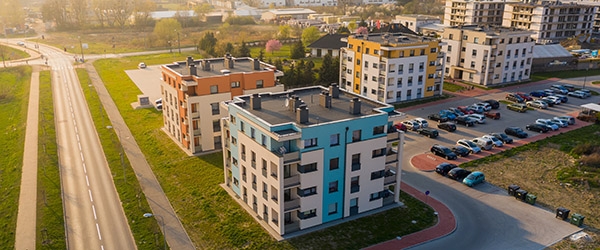The Advantages and Limitations of Land Use Codes for Multifamily Housing Trip Generation

- Download the Final Report (PDF)
- Download the Project Brief (PDF)
- See the big picture: Read about the ongoing work
Many cities are reconsidering their reliance on ITE's Trip Generation Manual, now in its 10th edition.
Kelly Clifton, TREC researcher and associate dean for research of Portland State University's Maseeh College of Engineering & Computer Science, is one of the people leading the charge to identify better, more nuanced ways to anticipate transportation demand; especially person (non-car) trips. In an extended series of TREC projects, Clifton and others have worked to create a more holistic approach to trip generation, particularly useful in urban areas with a greater mix of land uses.
Read about the overall trajectory of this ongoing research.
In the latest report to come out of these efforts, Clifton and co-investigator Kristina Currans of the University of Arizona examine the advantages and limitations of ITE's land use taxonomy for multifamily residences. They find that the land use categories aiming to capture intensity of development for residential land uses (high-rise apartments, for example) do not appear to capture any more variation in the vehicle or person trip rates than can be achieved by measure of the built environment.
Using inflexible land use codes instead of built environment or socio-economic characteristics is an approach that has limited usefulness over time. Clifton and Currans demonstrate that such land use codes would best be replaced by actual information about the urban, demographic, and economic context; such as density, mixed use development, transit access and median incomes.
A more concerted effort to examine the usefulness of the various land use data will be critical as we head into the future. With the introduction of transportation network companies like Lyft and Uber, urban goods delivery, and automated vehicles, vehicle trips may not have the same qualities as previous passenger trips in automobiles.
MORE ON LAND USE AT TRANSPORTATION & COMMUNITIES SUMMIT
This connection between land use and transportation is a priority of the NITC consortium. For a deeper exploration of that topic, join us in September at the 11th annual Transportation and Communities Summit (early bird ends Monday, July 15), where we'll have an entire track devoted to the intersection of transportation, land use and housing. Ewing will be presenting his research on affordable housing as a travel demand management strategy.
This research was funded by the National Institute for Transportation and Communities, with additional support from Metro, the District of Columbia Department of Transportation, and Portland State University.
RELATED RESEARCH
To learn more about this and other TREC research, sign up for our monthly research newsletter.
- Incorporate Emerging Travel Modes in the Regional Strategic Planning Model (RSPM) Tool
- Transferability & Forecasting of the Pedestrian Index Environment (PIE) for Modeling Applications
- Improving Trip Generation Methods for Livable Communities
The National Institute for Transportation and Communities (NITC) is one of seven U.S. Department of Transportation national university transportation centers. NITC is a program of the Transportation Research and Education Center (TREC) at Portland State University. This PSU-led research partnership also includes the Oregon Institute of Technology, University of Arizona, University of Oregon, University of Texas at Arlington and University of Utah. We pursue our theme — improving mobility of people and goods to build strong communities — through research, education and technology transfer.
